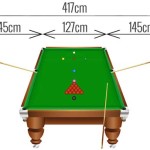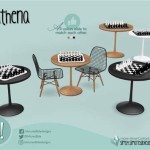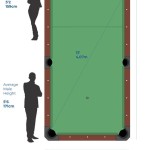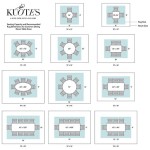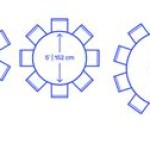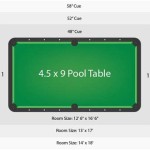What Are The Dimensions Of A Bar Size Pool Table?
The dimensions of a bar size pool table are a commonly sought-after piece of information for both recreational players and those considering purchasing a table for a smaller space. Unlike standard regulation pool tables, bar size tables are designed to fit into more compact environments, such as bars, pubs, or apartments. Understanding the specific dimensions and the variations within the "bar size" category is crucial for making an informed decision and ensuring a proper fit within the intended space.
While the term "bar size" might suggest a single, standardized size, in reality, it encompasses a range of dimensions, generally smaller than the regulation 9-foot pool table used in professional tournaments. The primary determining factor is the length of the playing surface, which directly impacts the overall table dimensions. This article will delve into the common dimensions of bar size pool tables, the factors influencing these dimensions, and considerations for ensuring adequate space for gameplay.
Common Dimensions of Bar Size Pool Tables
The most frequently encountered bar size pool tables are typically 7-foot tables. However, there can be slight variations even within this common size. These variations can be attributed to different manufacturers, design choices, and the materials used in construction. The following provides a more detailed breakdown of the typical dimensions:
A standard 7-foot pool table has a playing surface that measures 39 inches wide by 78 inches long. This measurement refers to the area between the noses of the cushions, where the balls are intended to roll. The overall dimensions, including the frame and rails, are generally around 44 inches wide by 83 inches long. The height of the table, measured from the floor to the top of the cushions, is typically around 31 inches. These dimensions offer a balance between a reasonably sized playing area and the ability to fit within tighter spaces, making them ideal for bars and homes with limited room.
It's important to note that some 7-foot tables might deviate slightly from these exact measurements. For instance, some manufacturers might opt for slightly wider rails, which could add an inch or two to the overall width and length of the table. Similarly, the thickness of the slate and the design of the frame can also contribute to minor variations in overall dimensions. When considering a specific table, it's always advisable to consult the manufacturer's specifications to obtain the most accurate measurements.
Although 7-foot tables are the most common bar size, some establishments or individuals might opt for even smaller tables, such as 6-foot tables. These are less frequently encountered but can be suitable for extremely limited spaces. A 6-foot table typically has a playing surface of 33 inches wide by 66 inches long. Overall dimensions are usually around 38 inches wide by 71 inches long, making them significantly more compact than their 7-foot counterparts. The height remains similar, generally around 31 inches.
Conversely, while less typical for bars, some establishments might utilize slightly larger tables, bordering on the dimensions of a home-use or coin-operated 8-foot table, especially if they have ample space. An 8-foot table typically has a playing surface of 44 inches wide by 88 inches long. Overall, the dimensions are usually around 50 inches wide by 94 inches long. This provides a more expansive playing area, approaching the feel of a regulation table, but still smaller than a true 9-foot table.
The dimensions of the playing surface are directly related to the overall accuracy and challenge of the game. A smaller playing surface on a 6-foot or 7-foot table requires more precise shots and tighter angles, which can be both more challenging and more forgiving, depending on the player's skill level. Larger bar size tables, approaching the 8-foot mark, offer a playing experience more akin to that of a full-size pool table, requiring longer shots and a greater degree of accuracy.
Factors Influencing Bar Size Pool Table Dimensions
Several factors contribute to the specific dimensions of a bar size pool table, including the intended use, manufacturing standards, and materials used in construction. Understanding these factors can provide valuable insight into the variations encountered within the "bar size" category.
The primary factor is the intended use. Tables designed specifically for commercial use in bars and pubs are typically built to withstand heavy use and frequent play. This often translates to a more robust frame construction and potentially thicker slate, which can slightly increase the overall dimensions. Tables intended for residential use might prioritize aesthetics or ease of assembly over extreme durability, potentially resulting in slightly smaller or more lightweight designs.
Manufacturing standards also play a role in determining the dimensions. While there is no single governing body that dictates the exact dimensions of bar size pool tables, reputable manufacturers adhere to established industry practices and strive to maintain consistency in their products. However, some manufacturers might prioritize specific design features or manufacturing processes that can result in minor variations in size. It is advisable to consult the specifications provided by the manufacturer when making a purchase.
The materials used in construction also contribute to the overall dimensions. The thickness of the slate, which forms the playing surface, directly impacts the overall weight and stability of the table. Thicker slate generally results in a more level and consistent playing surface, but it also adds to the overall weight and potentially the external dimensions of the table. The materials used for the frame, rails, and legs also influence the overall size and weight. Solid wood, for example, is often preferred for its durability and aesthetic appeal but can add to the overall bulk of the table.
The design of the rails and cushions also contributes to the overall width of the table. Wider rails provide a more comfortable resting place for players' hands and can also enhance the rebound characteristics of the cushions. However, they also add to the overall width of the table. The type of cushion material used and the way it is attached to the rail also affect the table's overall dimensions and playing characteristics. High-quality cushions provide consistent rebound and contribute to a more accurate and enjoyable playing experience.
Space Considerations for Bar Size Pool Tables
While understanding the dimensions of a bar size pool table is essential, it is equally important to consider the amount of space required for comfortable gameplay. Sufficient space around the table allows players to move freely, comfortably execute shots, and avoid obstructing other individuals in the area. Inadequate space can lead to awkward gameplay, damage to the table or surroundings, and an overall unpleasant experience.
A general guideline is to allow at least 5 feet of space around each side of the table. This provides enough room for players to comfortably use a standard 58-inch cue stick without hitting walls or furniture. For a 7-foot table, this translates to a minimum room size of approximately 13 feet wide by 17 feet long. For a 6-foot table, a minimum room size of approximately 12 feet wide by 16 feet long is recommended. For the larger, near 8-foot bar size table, a minimum room size of approximately 14 feet wide by 18 feet long is recommended.
These are minimum recommendations. If longer cue sticks are used, or if players prefer more space to maneuver, it's advisable to increase the recommended space accordingly. It is also essential to consider any obstructions in the room, such as columns, doorways, or furniture. These obstructions can further restrict the available playing space and should be factored into the overall assessment of whether a particular table will fit comfortably in the intended area. It is always wise to physically measure the space and visually simulate gameplay to ensure adequate clearance before committing to a purchase.
Furthermore, consider the positioning of the table within the room. Ideally, the table should be placed in a central location, allowing for equal space on all sides. Avoid placing the table too close to walls or corners, as this can restrict movement and make it difficult to execute shots from certain angles. Ensure there is adequate lighting above the table to provide clear visibility of the playing surface and balls. Proper lighting enhances the playing experience and minimizes the risk of misjudging shots. Poor lighting causes eye strain and a generally frustrating experience.
Finally, remember that the presence of other furniture in the room, such as chairs, tables, or bar stools, will further impact the available playing space. Ensure that there is adequate clearance between the pool table and other furniture to allow players to move freely without bumping into objects or feeling cramped. In some cases, it might be necessary to rearrange or remove furniture to create sufficient space for comfortable gameplay. Careful planning and consideration of all these factors will help ensure that the bar size pool table fits comfortably within the intended space and provides an enjoyable playing experience for all.

The Official Size Of A Pool Table Canadian Home Leisure

What Is The Standard Size Of A Pool Table Measurement Guide Room

Pool Table Room Size Guide Chart Birkbeck Billiards

Pool Table Room Size Calculator

How To Measure A Pool Table 4 Dimensions

Room Size Specifications Olhausen Billiards

Pool Table Sizing Dimensions Room Size

Pool Table Size Chart Moving The Experts

Room Size Pooltables Com

Room Size Specifications Olhausen Billiards
Related Posts


